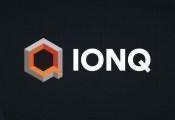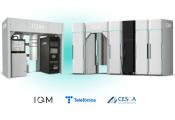The United States and Germany Sign Joint Statement to Enhance Cooperation in Quantum
On May 22, 2024, the United States and Germany signed a Joint Statement on Cooperation in Quantum Information Science and Technology (QIST) in Berlin, alongside a Joint Committee Meeting on science and technology cooperation between the two nations. The statement reflects the longstanding history of QIST research and development (R&D) collaborations between the countries, based on shared values and a mutual understanding that combining the expertise of the countries is crucial to realizing QIST technologies for the benefit of humanity.

Rahima Kandahari, Deputy Assistant Secretary for Science, Technology, and Space Affairs for the U.S. Department of State’s Bureau of Oceans and International Environmental and Scientific Affairs, signed the joint statement for the United States. “The United States and Germany have a strong tradition of collaboration to further scientific progress and benefit society,” said Deputy Assistant Secretary Kandahari. “This Statement underscores our intent to deepen our collaborative tradition in QIST and together further progress in this field.”
Prof. Dr. Sabine Döring, State Secretary at the Federal Ministry of Education and Research opened the Joint Committee Meeting in Berlin and emphasized, “The potential of quantum technologies for our societies and economies is vast, but so are the technological challenges ahead. Our joint statement today signifies our belief that international collaboration with leading quantum nations – such as the United States – based on shared values and principles is indispensable for progress. The statement underscores our intent to work together to shape the future of quantum technologies. Today the United States and the German quantum ecosystems move one step closer together.”
Dr. Tina Klüwer, Director-General for Research for Technological Sovereignty and Innovation at the German Federal Ministry of Education and Research, signed the Joint Statement for Germany.
QIST has revolutionized our understanding and control of fundamental quantum phenomena, which will potentially lead to the development of powerful quantum computers, networks and communication systems with novel capabilities, and sensors with unprecedented precision. As a result, the United States and Germany are investing heavily into QIST. The United States’ National Quantum Initiative invest roughly $1 billion per year and Germany’s Federal Quantum Technologies Action Plan allocates about €2.2 billion for QIST through 2026. Both countries have a long history of scientific collaboration, including QIST. For example, the National Science Foundation and the German Research Foundation (Deutsche Forschungsgemeinschaft, or DFG) solicited proposals for U.S. and German research teams to pursue joint work in physics, including QIST. NIST has ongoing collaborations with Physikalisch-Technische Bundesanstalt (PTB) on optical atomic clocks and ultrastable lasers, and both also co-chair the International Measurement Confederation Technical Committee on Quantum Measurement and Quantum Information. NASA and the German Aerospace Center (Deutsches Zentrum für Luft- und Raumfahrt, or DLR) launched the Cold Atom Laboratory (CAL) to the International Space Station to study fundamental quantum phenomena in microgravity. In addition to their bilateral cooperation, the United States and Germany are founding members of the Entanglement Exchange, a portal for highlighting international exchange opportunities for students, postdocs, and researchers in QIST. Furthermore, the United States and Germany worked with additional allies through multilateral dialogues to develop Principles for a Global Quantum Ecosystem Informed by Science. German companies are also eligible for membership in the United States’ Quantum Economic Development Consortium (QED-C).
Dr. Gretchen Campbell, Assistant Director for Quantum Information Science at the White House Office of Science and Technology Policy, and Director of the National Quantum Coordination Office, said, “This joint statement is both a testament to the decades of collaborative research in QIST between the United States and Germany, and a driver for enhanced collaboration that will accelerate QIST leadership for our two nations.”




































